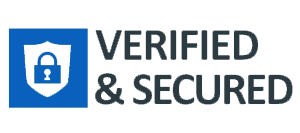There’s a popular saying in the world of business: “To make money, you need to spend money.” But what if you don’t have the immediate capital to invest in the equipment you need? Imagine your business being a vehicle, and equipment leasing is like the fuel that propels it forward. Without fuel, your vehicle can’t move, and without the right tools and machinery, your business might struggle to grow.
Introduction to Equipment Leasing
Remember when you were a kid and you’d borrow a toy from a friend? You got all the fun without the commitment of owning it. Equipment leasing is a bit like that but for businesses. Instead of purchasing equipment outright, businesses can rent it for a specified period.
Why Should Small Businesses Consider Equipment Leasing?
For many small businesses, upfront costs can be daunting. Equipment leasing offers an alternative. Think about this: wouldn’t you rather preserve cash flow and maintain more working capital? Plus, leasing can often provide tax benefits!
Types of Equipment You Can Lease
From computers and office furniture to heavy machinery and vehicles, the options are vast. Whether you’re a bakery in need of ovens or a tech startup wanting the latest software, there’s a lease out there for you.
Understanding the Financial Implications
It’s essential to grasp the monetary aspects. Monthly lease payments, interest rates, and potential tax deductions are key factors. Like ordering a customized coffee, you’ll want to ensure your lease fits your financial taste perfectly.
Steps to Get Started with Equipment Leasing
It’s simpler than you think. Start by identifying your needs, researching potential lessors, comparing terms, and securing the best deal. It’s like shopping for the perfect pair of shoes but for your business!
What to Look for in a Lease Agreement
Always read the fine print. Look out for terms related to maintenance, insurance, and renewal options. A lease is like a marathon; you need to be prepared for the long run.
Benefits of Leasing over Buying
With leasing, you get the latest equipment without the hefty price tag. Plus, there’s flexibility, potential tax advantages, and no worries about obsolescence. Imagine upgrading your smartphone every year without the guilt of spending too much!
Potential Pitfalls and How to Avoid Them
Not all leases are created equal. Beware of restrictive terms, hidden fees, or unfavorable buyout options. Like avoiding a pothole on the road, being vigilant can save you a lot of trouble.
Equipment Leasing vs. Equipment Loans
While both have their merits, leasing often requires less upfront cash and offers more flexibility. It’s like renting an apartment versus buying one; both have a place, depending on your circumstances.
Tips for Negotiating a Favorable Lease
Don’t shy away from negotiating. Ask about early termination, maintenance clauses, and potential discounts. Remember, the art of the deal is in the details!
How to Manage and Track Leased Equipment
Stay organized. Use management software or simple spreadsheets. It’s essential to know where your assets are and when lease terms end, much like tracking appointments on a calendar.
When to Renew or End a Lease
Consider factors like the equipment’s current condition, the cost of new leasing versus buying, and your business needs. Sometimes, it’s better to let go, just like ending a subscription you no longer use.
Making the Decision: Lease or Buy?
Weigh the pros and cons. Assess your financial situation, business objectives, and the equipment’s lifespan. It’s a big decision, much like choosing between two favorite dishes on a menu.
Real-world Examples of Successful Equipment Leasing
From local cafes to global giants, many have thrived with leasing. Learn from their stories and see how it might fit into your own business narrative.
Conclusion
Equipment leasing is a powerful tool in the business toolbox. It offers flexibility, financial benefits, and access to top-notch tools and machinery. Like using a map on a journey, make sure you navigate the world of leasing with knowledge and foresight.
FAQs
- What’s the typical duration of an equipment lease?
Most leases last between two to five years, but it can vary based on the equipment type and lessor’s terms. - Can I buy the equipment after the lease ends?
Often, yes. Many agreements have a buyout option at the end. The price might be a predetermined amount or the current market value. - Is maintenance included in equipment leases?
It depends on the lease agreement. Some include full maintenance, while others might require the lessee to handle it. - Are there tax benefits to equipment leasing?
In many cases, lease payments can be deducted as a business expense. However, always consult with a tax professional for specifics. - Can I terminate my lease early?
While possible, early termination might come with penalties. Always read the agreement to understand the terms.
Remember, your business’s growth and sustainability are paramount. So, explore the avenue of equipment leasing and see how it can fuel your business’s journey forward.


